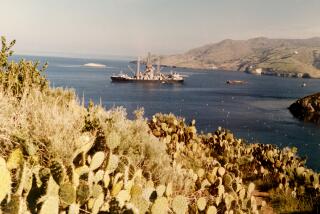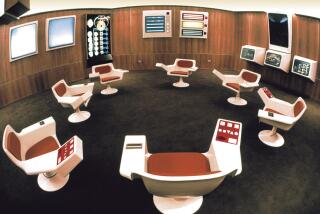Focuses on ‘Subversion’ by CIA : Cuba Museum Shows Anti-Castro Plots
- Share via
HAVANA — Thirty years of cloak-and-dagger attempts to assassinate Fidel Castro make the U.S. Central Intelligence Agency look silly, which is the undeclared purpose of Cuba’s Museum of the Organs of State Security.
The recently opened museum is replete with tales of espionage--including photographs of poisoned cigars and aspirin tablets--that were part of reported plots by the CIA to kill Castro or overthrow his revolutionary government.
Many of the attempts were disclosed in 1975 by a U.S. Senate committee probing CIA activities.
The exhibit, which includes many of the committee’s findings, even describes one of the more bizarre CIA ideas: to coat Castro’s shoes with a chemical that would make his beard fall out, thus presumably reducing his charismatic appeal.
Housed in a stately, remodeled cream-colored house in the residential Miramar district, the museum aims at “showing new generations how we fought against the enemy,” Maj. Noel Silgado of the Interior Ministry told foreign journalists during a recent tour.
“We wanted to present a testimony of all the aggressions (against Cuba),” he said.
Indeed, five of the museum’s eight rooms are devoted to detailed, sometimes tedious, accounts of U.S.-inspired, CIA-funded subversion, sabotage, espionage, “infiltrations” or invasion attempts. The museum lists about 270 illegal landings between 1959 and 1983, including the famous failed one at the Bay of Pigs in April, 1961.
The history of U.S. hostility toward its small Caribbean neighbor began, the exhibit argues, with the 1898 invasion of U.S. Marines.
Of the hundreds of assassination plots against Cuban revolutionary leaders, it contends, only one was not thwarted beforehand: the unsuccessful road ambush on now-Vice President Carlos Rafael Rodriguez near Havana in September, 1961.
Silgado said the last known plot against Castro dated to the Cuban leader’s visit to Chile in 1970. It involved a gun made to look like a movie camera.
But, in answer to a question, he said Cuban intelligence learned of a similar plan by anti-Castro Cuban exiles when Castro travelled to Caracas in February for the inauguration of Venezuelan President Carlos Andres Perez. The major would give no details.
The Cuban president made indirect references to this plan when he told journalists in Caracas of “dangers” surrounding his trip.
In vigorous good health, according to diplomats here, Castro already has outlasted seven American presidents. He has vowed that the revolution he launched right under Washington’s nose will last at least 100 years.
A longtime foreign resident and expert on intelligence matters said the museum, which opened in April, offers no revelations. Yet, no photographs were allowed to be taken inside.
Some of the material on display was seen in 1987 when Cuban television broadcast a series of anti-CIA programs showing diplomats from the U.S. interests section here allegedly engaged in espionage activities, driving to secluded spots to retrieve satchels from under bridges or bushes by the roadside.
The bags were said to contain high-powered transmitters.
A Western diplomat said at the time he would not be surprised if a book was published on all that. A book did appear later.
The museum, with its strident anti-American rhetoric “is just another way to cast the CIA as the ultimate villain,” the same diplomat said.
Diplomats see in the museum--the building became headquarters of Cuban intelligence units in 1959--a traditional element of Cuban imagery since the 1959 revolution: to use real or alleged “imperialist threats” to instill a stronger sense of national unity and a siege mentality.
The last room on the guided tour, the Hall of Martyrs, contains pictures of Cuban security agents killed in the line of duty, including 19 in Angola and some in Bolivia and Venezuela during the 1960s in Cuban-backed leftist insurgencies.
More to Read
Sign up for Essential California
The most important California stories and recommendations in your inbox every morning.
You may occasionally receive promotional content from the Los Angeles Times.













